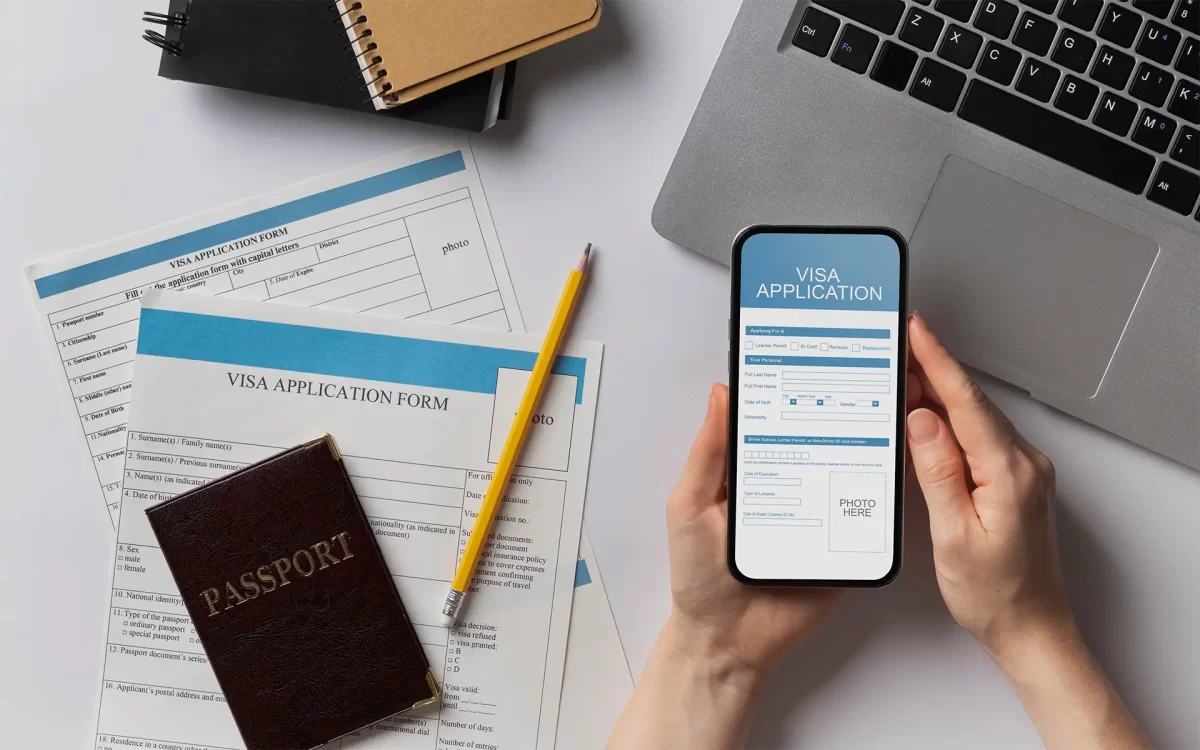
Growing Trend of Digital Visa Systems
Digital visa systems represent an important shift in the travel industry. Like other sectors, travel has moved towards digital solutions that streamline processes and improve the customer experience. The pandemic has accelerated this trend by creating demand for contactless and remote travel options. Digital visa systems are one of the most popular products to surface in recent years. They have eased many concerns for travelers by streamlining visa and immigration processes that are typically delayed due to manual administrative complexities. This article will address digital visa systems, how they work, the benefits of implementing them for travelers, current limitations, and future developments.
What are Digital Visa Systems?
Digital visa systems refer to various electronic platforms governments and authorized entities use to process applications and issue electronic visas (e-visas) to eligible travelers. These systems were designed to replace manual, paper-based visa applications. They aim to make getting a visa more convenient and straightforward while reducing waiting times and improving security.
While each digital visa system is different, they share similar attributes. For example, most systems allow applicants to complete and submit their application forms online. They also featured means of uploading required documents as stipulated by the application being completed. Instead of being informed of the application status by mail or phone, applicants can also use the digital visa system to track their visa status. If approved, the e-visa can typically be sent directly to the applicant via email or downloaded within the digital visa system portal.
How Digital Visa Systems Work
While every digital visa system has its own unique process, there are common steps most people will follow:
- Determine you meet the visa requirements. This involves providing documents like a valid passport, proof of funds, or evidence of your travel purpose like medical or business needs.
- Fill out the application form online, providing details such as your personal information, contact details, passport information, intended travel plans and any required documents.
- Pay the visa fee securely through the online portal. Most of the time, the system will not allow you to submit the application until paying the visa fee electronically.
- Submit your completed application along with all required documents. The immigration authorities will then review your application and decide whether or not to approve your visa.
- Await a decision: Processing times for digital visas vary significantly, from instant approval for some expedited visa systems to a few weeks for more complex visas. Many digital visa systems aim to provide a rapid decision in hours or days to facilitate business and tourism travel. The benefit of digital visa systems is that applicants can check their visa status directly through the digital portal.
- Receive the electronic visa (e-visa): If the visa is approved, applicants will receive it via email or a downloadable link on the digital visa system. Printing this document to present to the border authorities on arrival is highly recommended.
Applicants should familiarize themselves with the specific digital visa system before beginning the application process.

Benefits of Digital Visa Systems
For one, applicants can now apply for their visas from anywhere in the world as long as they have an Internet connection. This removes the need to travel to a visa application center in person which can save time and money.
For visa application teams that have to process thousands of applications daily, digital systems have streamlined the process and made it more manageable.
Some of the key benefits of online visa applications include:
- Speed: Visas can be issued faster since applications are digital and no longer require sorting through piles of paperwork. Applicants receive their visas more quickly.
- Lower costs: Digital systems are cheaper to manage which can reduce costs for both applicants and visa processing centers.
- Greater security: Applicants submit info and pay online, which is safer than mailing documents. This reduces the risk of fraud or theft.
- Better data management: Visa centers can manage the large volume of applications more effectively through an online portal. Digital systems tend to be more accurate and efficient.
- Increased access: Digital visas make the application process more accessible for applicants with disabilities, limited mobility, or financial constraints.
Examples of Digital Visa Systems
There are already many great examples of digital visa systems that exist internationally. Australia implemented its Electronic Travel Authority (eTA) system in the 1990s, which is efficient and straightforward, processing most applications within 24 hours. The Canadian government launched its eTA system in 2015, which massively reduced waiting times, increased customer satisfaction, and made the visa application process more manageable overall.
The United States launched the Electronic System for Travel Authorization (ESTA) back in 2009. The goal was to streamline the massive number of visa applications they receive each day while improving security. Through ESTA, travelers can apply for visas online instead of going through the traditional paper-based process.
India also established its e-Visa system in 2014 to simplify visa applications for international visitors. The online portal allows travelers to submit visa requests remotely and many receive a response within just 72 hours. This accelerated approval time reflects India’s aim of using technology to improve their visa process and attract more tourism and business visitors.
Challenges and Limitations to Digital Visa Systems
Of course, as will any system, there are limitations to digital visa systems that applicants and potential applicants should be aware of. Digital visa systems are vulnerable to cyber attacks, data breaches, and identity theft that leave personal information exposed to be used for fraudulent purposes.
While digital visa systems offer many benefits, there are potential issues – like any technology, online portals can experience disruptive outages, not everyone has reliable internet access or a device to apply online which can prevent lower income applicants, and many ports are not accessible for those with disabilities – leaving some applicants unable to take advantage of the streamlined process.
The good news is these issues have solutions: by adopting the latest security features, online systems will experience fewer outages while ensuring digital visa portals accommodate people with disabilities and other needs will allow more people to apply online – changes that can benefit the entire application process. With the right improvements, existing technology has the power to minimize problems and maximize benefits by thoughtfully designing portals that are accessible so all applicants can use them, reliable to minimize disruptions, and secure to protect sensitive information – enabling digital visa systems to truly transform and improve the visa application process for applicants and employees alike.

The Future of Digital Visa Systems
As technology improves, digital visa systems will surely benefit from advancements and innovations. Artificial Intelligence (AI) can be used to automate tasks like identifying fraudulent applications, answering applicant questions, analyzing data patterns, and tracking algorithms.
Blockchain technology is another promising technology that can securely store visa application data by creating a secure, tamper-proof record of all visa information and application transactions. It’s likely that mobile applications will also be enhanced in the future, allowing applicants to submit their applications and receive real-time updates more easily.
There are also opportunities for virtual and augmented reality (VR/AR) technologies to allow applicants to conduct interviews online, “visit” the country before traveling, or seek assistance with visa application centers remotely during the application process.
Conclusion
Digital visa systems have already improved the application process for many types of visas. In the countries where they are used, visa processes are more efficient, less costly, and accessible to a broader range of people. Digital visa systems allow applicants to apply for and receive their e-visa without facing the administrative complexities of traditional paper-based visa processes. Moving forward, there are many exciting opportunities for these visa systems and portals to incorporate innovative digital technologies into their software, improving them even further. Development companies will focus on security and automation to enhance the traveler experience and further support economic growth and development.




































































































